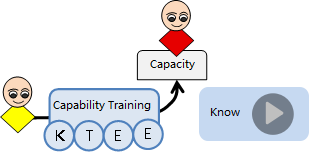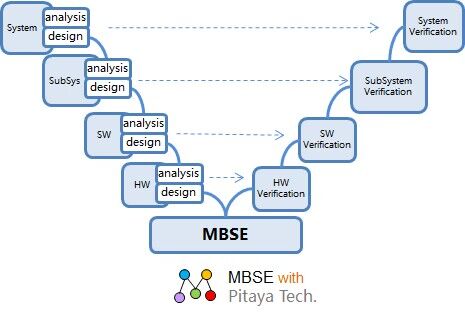|
|
| Successful Case
|
| Continental Automotive Electronics |
| Bosch Automotive Electronics |
| Schaeffler electric drive |
| Joyson Automotive Electronics |
| Huawei Technical Center |
| BMW Automotive Research and Development Center |
| Geely Auto Research Institute |
| Byd Automotive Research Institute |
| |
|
|
|
|
|
|
| Courses > Modeling |
|
 |
|
System Design and Modeling Based on SysML and EA  |
Views 
|
|
 |
|
| Zu Tao
|
| Founded uml.org.cn in 2001, 2005 IBM Rational User Group Best Speaker |
| |
|
|
| Time Location: Beijing, September 26-27; Shenzhen and Shanghai open classes Based on registration |
| Course CostпЉЪ1300 $/Person
|
|
|
|
| Internal Training: You can customize internal training according to the needs of the enterprise. |
|
 |
Authentication Method:
Understand the competency model before training.
Ability evaluation after training:
Online Examination
Ability Analysis, give learning suggestions
The qualified person shall be issued a certificate as proof of vocational skill qualification
|
 |
|
|
|
This course focuses on how to use SysML, a modeling tool based on EA, to describe customer system requirements, design, and implement structure. Including static structure and dynamic logic. It also focuses on model-based code generation, document generation, model team collaboration and management. Will be combined with practical cases to explain, to achieve practical results. |
 |
| |
| Training Goal |
At the end of this course, participants should be able to:
- An overview of embedded system development process and SysML modeling cases
- SysML visual modeling
- SysML Modeling Guide using EA
- Use SysML for a small case modeling
- Use SysML for complete case analysis design and modeling, case explanation, case practice.
- Requirements analysis and SysML modeling
- System analysis and modeling
- System architecture design and modeling
- Module design and modeling
- Software modeling using SysML
- Ea-based implementation
- Test modeling based on EA
- From model to document
- Manage the model
- Establish an Ea-based team working environment
- Integration with the customer's existing processes
|
| Course FeaturesпЉЪ |
1. Teaching by senior experts, interactive case teaching, real combat simulation project operation
2. Master SysML modeling technology through practice drills
3. Combine theory with practice and pay attention to the explanation of cases
4. Have profound theoretical depth and accurately grasp the normative semantics of SysML.
5. Full case explanation, students learn while doing, specific and profound.
6. Consult cases proposed by students to guide analysis and design. |
| Training TargetпЉЪSystem Engineers, Requirements Researchers, Development Engineers, Technical Solution Personnel |
| Student Foundation:Experience in business process analysis and modeling |
| Teaching Method:
Customized Course + Case Explanation + Group Discussion, 60% Case Explanation, 40% practice exercise |
| Training Content: 2 Days
|
| SysML modeling basics |
What is SysML
Why use SysML
Relationship between SysML and UML
SysML modeling framework
SysML modeling example
|
| SysML Modeling Tool EA Overview |
What are the relevant SysML modeling tools
What are the characteristics of EA
Graphic element
Modeling method
teamwork
Demand reception and management
Develop mapping and synchronization
|
| Build a requirements analysis model using SysML |
Receive the request
Use the requirements diagram to model the requirements
Use case modeling of requirements
Build a system structure model for requirements (module diagram)
|
| System Analysis |
Analyze interactions between modules
Analyze the internal structure of the module,
Divide software and hardware boundaries: Divide software and hardware considering cost, efficiency, and maintainability
Analyze the interaction of software and hardware within the module
Define and model hardware and software interfaces
|
| System Structure Modeling and Design |
Partition and model the module structure
Modeling interactions between modules
Interface analysis and modeling between modules
Defines the module external interface
Defines the internal interface of the module |
| System behavior modeling and design |
The modeling module functions to process the flow
The supplementary module handles the parameter model
Modeling system state
Associate processes, parameters, and states
|
System Simulation
|
Define simulation variables
Simulation of system behavior
Track the system's processing flow
Monitor system parameters
Identify design problems with the system
Revised system behavior design
|
| Software and hardware interface definitions |
System software and hardware integration reference architecture
Software and hardware interface layer definitions
Software and hardware interface design
Interface communication protocol modeling and simulation
|
| Transition from system design to software requirements |
Mapping relationship between system model and software model
System modules are mapped to software units
Mapping from a system interface to a software interface
Mapping from system logic to software logic
Establish software requirement model
|
| Software Design and Simulation |
Software structure design
Software process design
Software interface design
Simulation of software running process
Monitoring parameter
Identify problems and revise the software model
|
| From model to document
|
Generate documents through models:
System requirements document
System design document
Software requirements document
Software design document
|
| From model to development |
From model to code
Structural code
Procedure code
Model checking and validation
|
| Model-based tracking |
Traceability of user requirements to system models
System model of software model tracking
Software model to software test tracking
System model to system test trace
|
| Model-based management |
Model-based requirements management
Model-based quality management
Model-based change management
|
|
| |
|
|
|
|
|
| Consulting Objective
|
Help build model-driven analysis, design, development, testing |
| Scope Consultation |
Requirements Modeling, Architecture Modeling, Database Modeling, Code Modeling, Test Modeling.
|
| Consultation Method |
Model-driven development process training, modeling and management tool environment construction, combined with actual customer case demonstration, team practice guidance, model evaluation standards formulation, specification formulation |
| Successful Case |
Huawei Research and Development Center, Space Center of Chinese Academy of Sciences, Nanjing 14 Institute, China Mobile Research Institute and so on. |
| For more information:010-62670969пЉМ umlooo@hotmail.com
|
|
|
|
|